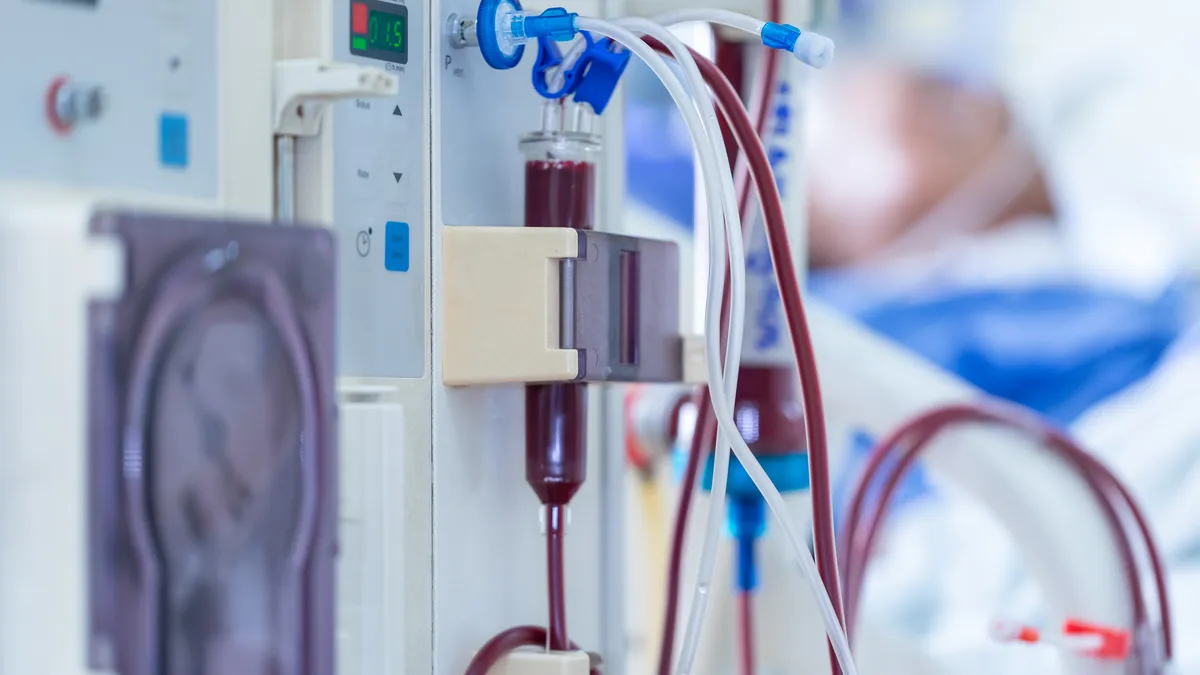Insulet received U.S. clearance Monday for its Omnipod 5 system for Type 2 diabetes management — a first for the industry — making automated insulin delivery to control blood sugar available to millions of additional people living with diabetes.
The system’s tubeless pump automatically adjusts insulin levels based on data from a continuous glucose monitor (CGM), replacing manual dosing. Since its approval for Type 1 patients in 2022, Omnipod 5 has become the most prescribed insulin pump in the U.S. and has more than 250,000 users globally, Insulet Chief Medical Officer Trang Ly said in an interview with MedTech Dive.
Ly discussed the product’s launch for Type 2 diabetes patients, partnerships with other device makers and how the company is working to win over doctors reluctant to prescribe insulin pump therapy.
This interview has been edited for length and clarity.
MEDTECH DIVE: Given that most Type 2 patients aren’t using an insulin pump, which patients do you expect to adopt automated delivery?
TRANG LY: It'll be anyone with Type 2 diabetes who needs insulin therapy.
Today, not a lot of people with Type 2 diabetes use pumps, and part of that is because of the complexity of older pumps, and also the clinical inertia that exists for people with Type 2 diabetes. There's a perception that people with Type 2 diabetes find this technology too complicated, and doctors don't want to add to the complexity and burden for their patients.
What happens is, people with Type 2 try oral medications and then injectables such as GLP-1s, and then, as their disease progresses, they're started on insulin, often initially with [long-acting] basal insulin. Then they need multiple daily injections to cover their meals.
We believe the market today for people using multiple daily injections is two and a half million people, and then roughly three and a half million people on basal-only therapy.
Only about a quarter of people who are on insulin therapy actually reach a target glucose of under 7% hemoglobin A1C. So there's an urgent public health need to improve the outcomes of people with Type 2 diabetes.
That is where our innovation comes in. It can replace multiple daily injections and can take someone who's only on once-daily basal insulin straight onto an automated insulin delivery system, so they're getting just the right insulin that they need. They can deliver their mealtime insulin conveniently through their phone, and they don't have to give injections in front of their friends and family at restaurants anymore.
How do you overcome the resistance to pumps among physicians?
First you have to develop a good product, and then you have to demonstrate that it can be effective. We did that through our clinical study. The Secure-T2D study was not only racially diverse, but very representative of the general population living with Type 2 diabetes. Roughly 50% of the patients had less than $50,000 a year household income, and for about a third of the patients, the highest education level attained was high school.
You really have to prove it through results for doctors to [feel comfortable prescribing]. Part of the reason doctors don't prescribe insulin and appropriately titrate the insulin for patients is they're worried about hypoglycemia, which is low blood sugar. If you give too much insulin, people can develop cognitive impairment, seizure, coma or death. People worry about that, and they don't escalate the treatment that is required.
Simplicity and ease of use is really important. In our study, 94% of our patients had never used a pump before, and then we put them straight onto this tubeless, automated insulin delivery system, and they did great. They got great reduction in their A1C.
Part of it is doctors think, “Oh, my patient’s a little older, and they don't need all this technology.” They're going to be fine. Demonstrating very clearly that an easy-to-use product tested in a broad range of patients is highly effective, with a favorable safety profile, is critical in helping change the minds of doctors into considering these therapies for their patients.
What is the cost for patients?
The Omnipod today is available for over 90% of the U.S. population through the pharmacy benefit. [A doctor] can just write a script for Omnipod through the pharmacy channel. That includes commercial care, Medicare, Medicaid, and there is no C-peptide requirement through that channel.
It doesn't matter whether you have Type 1 or Type 2 diabetes, anyone can get it. The majority of our patients pay less than $50 out of pocket per month for their pods, and a third of our patients pay $0 out of pocket.
What is Insulet’s plan for launching Omnipod 5 for Type 2 diabetes patients?
Our reps are already out today talking to endocrinologists, selling it for Type 1 patients, so we can continue with our strategy and then have those additional discussions with the doctors about how now we’re approved on label for Type 2 diabetes. The product is the same, and we'll be launching on day one.
Is Insulet partnering with other diabetes tech companies?
Just in June, we announced G7 integration. Our product talks with the Dexcom G6 [CGM] product and G7 product. And toward the end of this year, we'll be launching integration with [Abbott’s] Freestyle Libre 2 Plus product as well. We're working hard to get Omnipod 5 to many, many more patients around the world, and excited to be able to reach more patients, especially people with Type 2 diabetes, through collaboration with our partners.


















